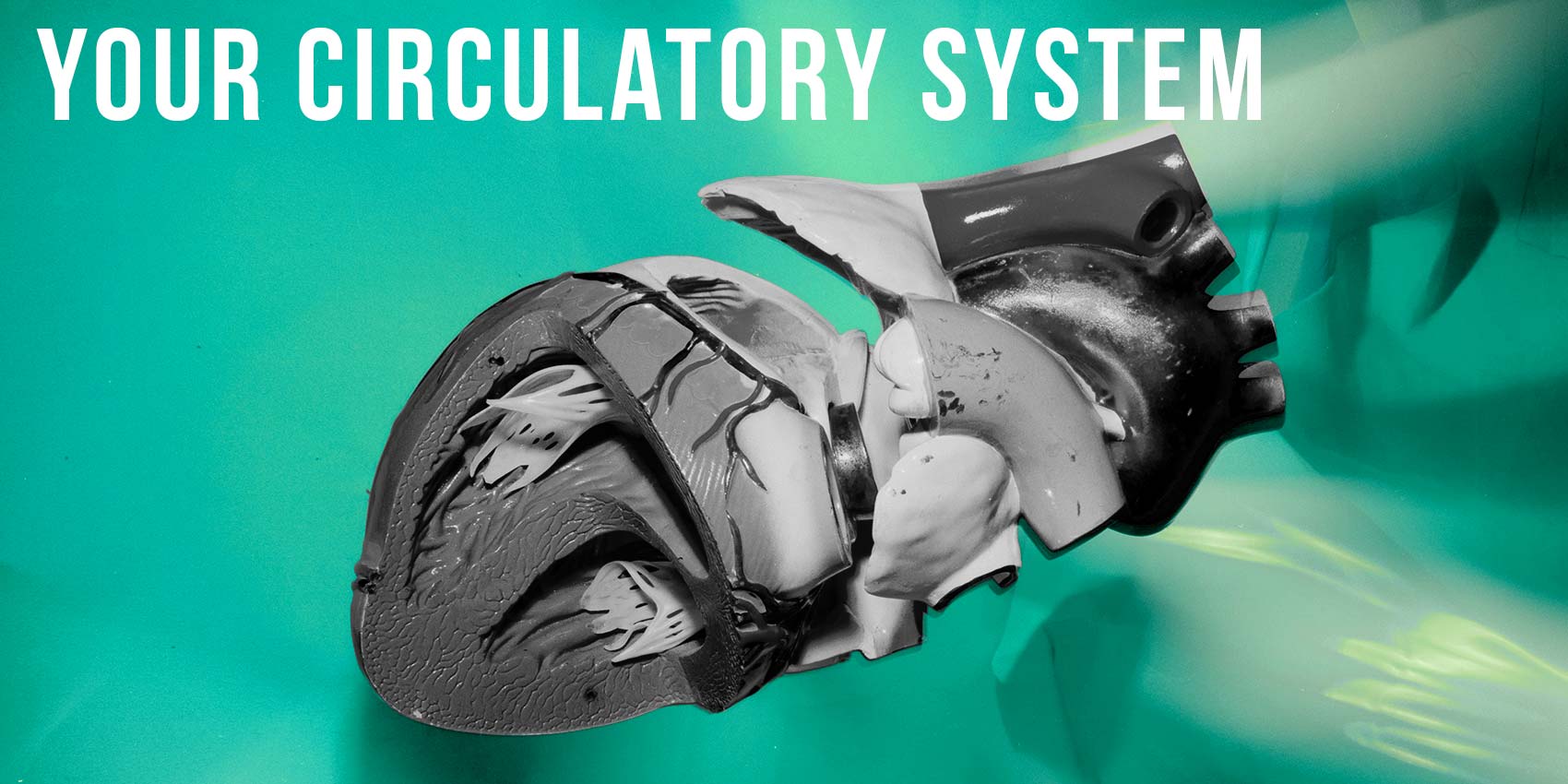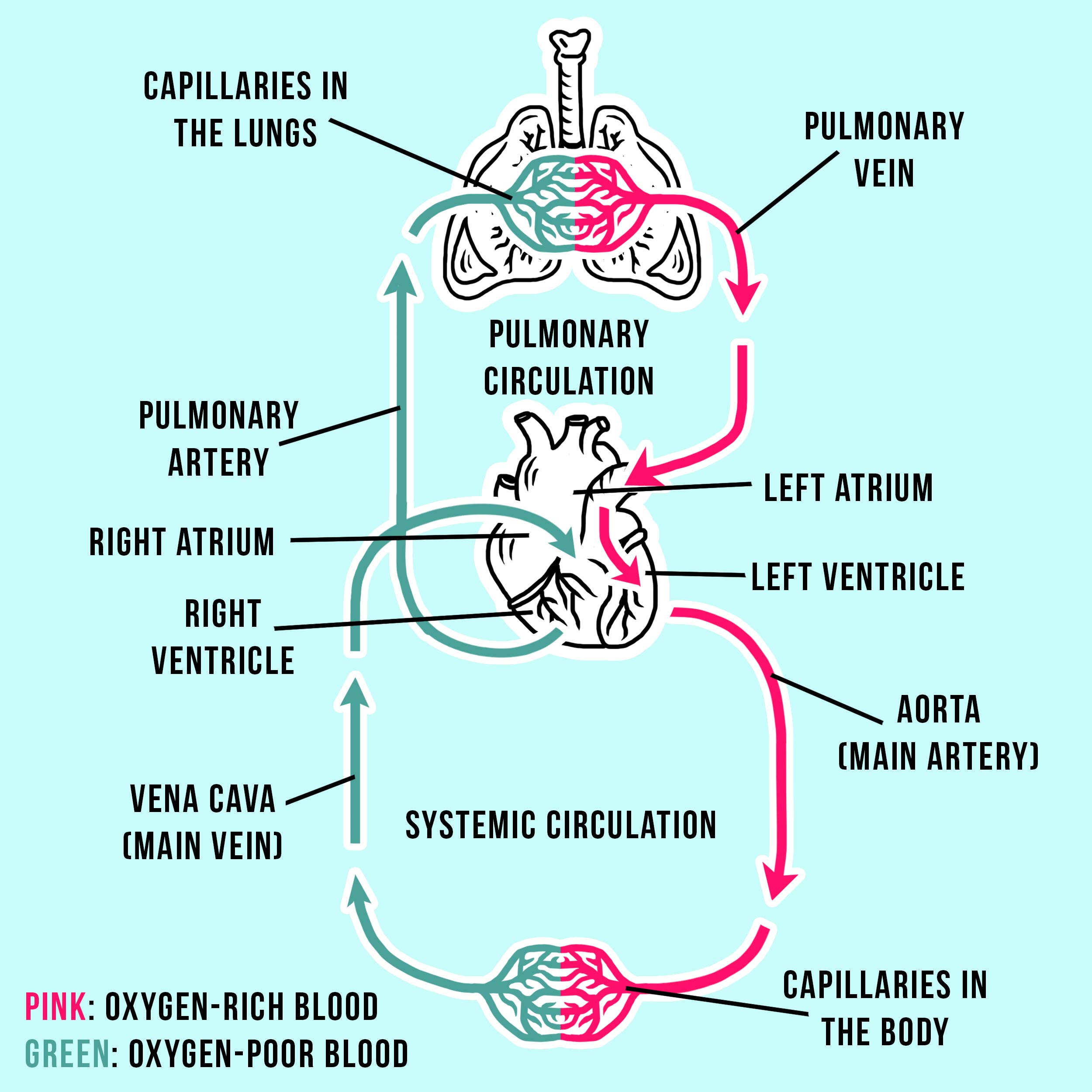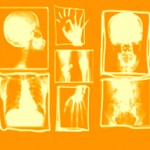10 Nov Your circulatory system

Main sources for this sub-post: https://www.ncbi.nlm.nih.gov/books/NBK279250/
https://www.betterhealth.vic.gov.au/health/conditionsandtreatments/circulatory-system
Your Circulatory System is also called your cardiovascular system.
The system is made up of your: blood, heart, arteries, veins and capillaries. As blood is pumped throughout your system, it brings oxygen and nutrients to your organs and tissues and then this system pumps waste and carbon dioxide out of your body. This helps your body fight diseases, repair injuries, and maintain homeostasis (there’s that word again!).

Before we translate this process into a silly story, you must know this:
You have 2 circulatory systems—systemic and pulmonary—that are connected via the heart. The systemic system provides organs, tissues and cells with oxygen-rich blood, plus other vital substances. The pulmonary system (you read about this in the Respiratory Sub Post) pumps oxygen into the blood (inhale) and then pumps carbon dioxide out of the blood (exhale) through the lungs.
Arteries carry blood away from the heart (think “A” for artery = “A”way from heart). There are two: the aorta that carries oxygen rich blood out of the heart to the body’s organs (part of the systemic system) and the pulmonary artery which carries oxygen-depleted blood to the lungs (part of the pulmonary system).
Veins carry blood to the heat. Again, there are two: the pulmonary vein that takes the newly oxygenated blood from the lungs and sends it to the heart and the vena cava that carries the oxygen-depleted blood back to the heart. The heart then circulates that blood into the pulmonary artery to get the blood to the lungs so the blood can restock its oxygen supplies.
Now for a story to help illustrate the science of your masterful circulatory system.
There’s a party going on in your body, actually all over your body: That party needs food and it needs to get rid of the garbage the party creates (nobody wants to party in garbage). So we have supply routes for this purpose!
Now breathe. Because as you inhale oxygen, tiny blood vessels called capillaries in our lungs reach out with their tiny hands, grab the oxygen from the lungs, say “thank you!” and hand that oxygen over to the blood cells. Your blood vessels are the supply route for the much-needed party supplies: oxygen and nutrients. Not to be confused with your blood cells, which travel within the supply route (blood vessels) and deliver the supplies.

DID YOU KNOW? Blood vessels (arteries, veins and capillaries) carry the blood while blood cells are what make up your blood.
The party supply route starts in the lung capillaries (the pulmonary party transfer stations), where the blood cells get the main party snack (oxygen-delicious!), and then the cells enter the larger blood vessel, called the pulmonary vein, that travels toward the heart. That oxygen-rich blood then does a little tour of the left side of the heart (from the atrium to the ventricle) and then swiftly exits into aorta-land, also known as the main artery that takes blood away from the heart.
As the oxygen-rich blood travels away from the heart, it enters smaller and smaller blood vessels until it finally lands in the capillaries throughout the body.
[Yes! You noticed that it was the tiny hands of the capillaries that grabbed the oxygen in the lungs and, swoosh!, gave it to the blood cells in the first place. Capillaries are actually found throughout the body as they are the stations where party supplies are taken in (the pulmonary party transfer stations) and/or traded for garbage (the systemic party transfer stations)]
Now, back to the party…. At the systemic party stations, the oxygen, nutrients and other important substances are released from the blood (those little capillaries doing their jobs) into the body, specifically to the organs and tissues throughout your body. Those organs and tissues use those awesome party supplies to keep your body healthy (and alive!).
But like at any good party, there is garbage too. And like any responsible party planner, you have a clean up system in place—the capillaries! The organs dump their waste and carbon dioxide into the “clean up” capillaries at the systemic party transfer stations. You see, you have capillaries whose job it is to distribute food to the party, and you have capillaries whose job it is to clean up after the party. You’re an excellent party planner. Keep breathing, there’s more.
The clean up crew (the blood cells) now travels the other half of the party supply route to take the waste and carbon dioxide into veins that bring it to the right side of the heart this time (the right atrium) and then it continues to the right ventricle. After the heart tour on the right side, the blood moves into the pulmonary artery. Yes, we have moved from the systemic part of the party route, to the pulmonary. The blood then travels various arteries which branch off into smaller and smaller vessels until they become capillaries in the lungs where waste is gathered and sent out of the body.
Which means, now that those tiny capillaries in the lungs have all that garbage, all you need to do is exhale all that junk and be happy that you’ve finished reading about that confusing but life-saving system! (Rather, two systems, the pulmonary for breathing and the systemic for providing organs and tissues with the blood that is full of oxygen and good stuff.) You’ll never party the same again.

DID YOU KNOW?: Blood consists of red blood cells (carry oxygen), white blood cells (part of the immune system), platelets (needed for clotting) and plasma (a liquid that contains cells, nutrients and waste).




Post Question:
If you had to teach the pulmonary and systemic systems to a friend, what cool nicknames would you give each system and why?
Answer the post question here
What's being said